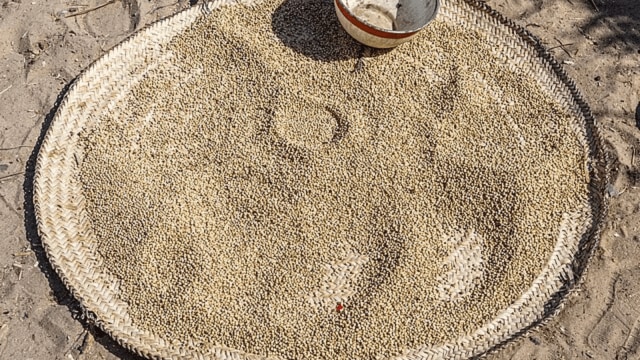In his early 40s, Sunil* would get uncomfortable whenever a doctor asked him about his eating habits. A bank clerk from Dombivali in the Thane district of Maharashtra, he often skipped packing a tiffin just to avoid being late. On such days, he would pick up a vada pav on the way to curb his hunger. Occasionally, he would head to the Udupi restaurant a few metres away from the bank for a plate of idli or dosa. That habit of eating out pushed up his HbA1c levels (average blood sugar levels of three months) to 8.1 per cent, indicating he was living with diabetes. His fasting blood sugar was high at 120 mg/dL and post-meal blood sugar level was at 210 mg/dL.

At Dr Mohan’s Diabetes Specialities Centre in Chennai, 40-year-old Raghu* was also advised to improve his lifestyle by making healthier diet choices. “He was getting around 60 per cent of his total calories from carbohydrates. Protein just made up 12 per cent of his calories. His HbA1C was 8.1 per cent. We asked him to reduce carbohydrates to 50 per cent and upped protein to 20 per cent. We prescribed a balanced diet besides advising him on portion control and healthier substitutes,” says diabetologist Dr V Mohan, chairman, Dr Mohan’s Diabetes Specialities Centre. “One to one counselling session and a structured physical activity plan helped him bring down the HbA1C to 6.8 per cent. But it was the diet modification of reducing and replacing carbohydrate calories with more protein calories that improved his counts,” adds Dr R M Anjana, president, Madras Diabetes Research Foundation, who has authored a study on how dependence on cereal staples affects blood sugar profiles. It was part of the Indian Council of Medical Research-India Diabetes (ICMR-INDIAB) study, which was published in Nature Medicine on September 30.
Indian diets are high in cereal staples
Story continues below this ad
Given the diversity in Indian diets, no national survey has systematically examined differences in our blood parameters caused by varying intake of major macronutrients (carbohydrate, fat and protein) and their food sources, by region and macronutrient quality. “The effect of replacing carbohydrates with protein or fat subtypes on metabolic risk was unknown,” says Dr Anjana. She, along with other researchers, embarked upon this nationally representative study that highlights similarities and differences in the usual intake of macronutrients between and within various regions of India. Using data from the national Indian Council of Medical Research–India Diabetes (ICMR-INDIAB) survey, they examined India’s dietary profile and the effect of an isocaloric diet, which is a diet identical in total caloric intake but different in terms of macronutrients. So carbohydrates can be replaced with a similar calorie-yielding protein, for instance.
The cross-sectional survey included a nationally representative sample of 1,21,077 Indian adults from urban and rural areas of 36 states, Union Territories and the National Capital Territory-Delhi. “We used a validated food frequency questionnaire (FFQ)51 to assess diet across regions. We also explored a strategy to reduce metabolic risk by modelling isocaloric substitution of protein and its subtypes for carbohydrates,” says Dr Anjana. Detailed dietary data from every fifth participant was used to characterise India’s dietary profile across regions and examine inter and intra-regional differences in macronutrient intakes and associated metabolic risk. “We found that typical Indian diets, heavy in carbohydrates from white rice or whole wheat flour and low in quality protein, are putting millions at risk. Simply switching from white rice to whole wheat or millets is not enough unless total carbohydrate intake decreases and more calories come from plant or dairy proteins,” explains Dr Anjana.
Dr Joshi, who is also one of the study authors, had done another study in 2014, which showed that Type 2 diabetic participants got 64.1 per cent of their total calories from carbohydrates, higher than recommended limits. Explaining how urbanisation and economic growth drive major deviations in dietary patterns, he says, “Environmental and lifestyle changes resulting from industrialisation and migration to an urban environment from rural settings may be responsible to a large extent in contributing to the epidemic of Type 2 diabetes mellitus in Indians.”
The art of substitution
While diabetes is a huge problem in India, obesity, especially abdominal obesity caused by excess visceral fat due to physical inactivity and consumption of high-calorie/high-fat and high-sugar diet, elevates the risk of heart disease and fatty liver.
Story continues below this ad
Food scientist Sudha Vasudevan, who works with the Madras Diabetes Research Foundation, is working on the art of substitution. “Four idlis in a standard diet can be cut down as they are high in carbohydrates and can be replaced with dal-rich sambhar. Similarly, aloo parathas can be cut down and the plate include more curd and dal fry,” she says. Such dietary changes can help reverse current nutrition trends, address widespread protein gaps and improve overall diet quality, Dr Mohan explains.
Reducing overall carbohydrates and saturated fat while increasing the intake of plant and dairy proteins could mitigate the risk of diabetes, cholesterol and heart disease. Replacing five per cent energy from carbohydrates with five per cent energy from plant, dairy, egg or fish protein was associated with a lower risk of newly diagnosed Type 2 diabetes and prediabetes, according to the findings.
On the other hand, the replacement of carbohydrate with animal protein was not associated with a lower risk of newly-diagnosed diabetes or prediabetes except when the source of animal protein was fish or egg, where the risk was lower by six to 10 per cent. “Essentially our modelled substitution analysis found that replacing just five per cent of daily calories from carbohydrates with plant or dairy proteins significantly lowers risk of developing diabetes and prediabetes. Importantly, replacing carbs with red meat protein or fats did not have the same protective effect,” Dr Anjana adds.
“High carbohydrate intake represents a major risk factor for non-communicable diseases and should prompt policy action to lower consumption,” says Dr Mohan, who is also the senior author of the study. According to him, widespread reliance on subsidized rice and wheat likely drives high cereal intake, highlighting the need to prioritize pulses and legumes in subsidy programmes over refined cereals.
(*Names changed to protect privacy)

































